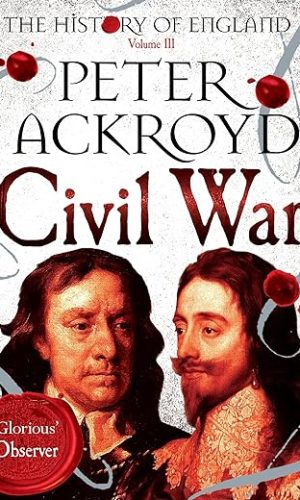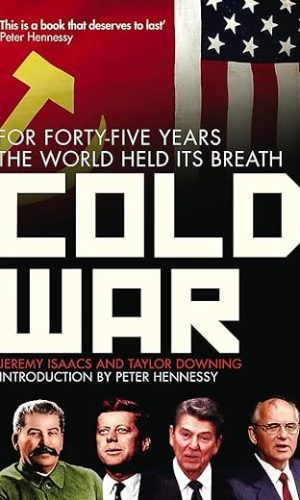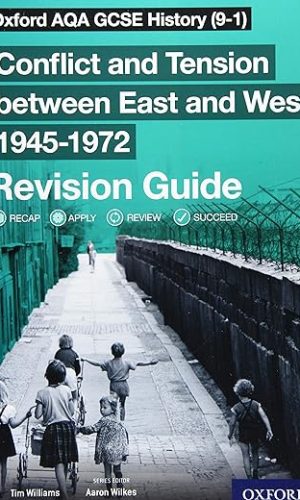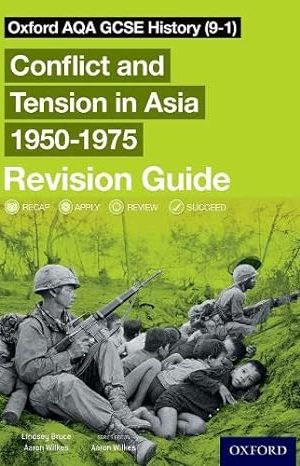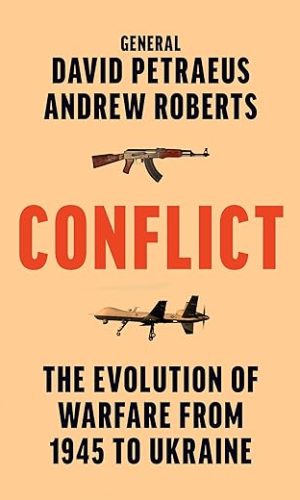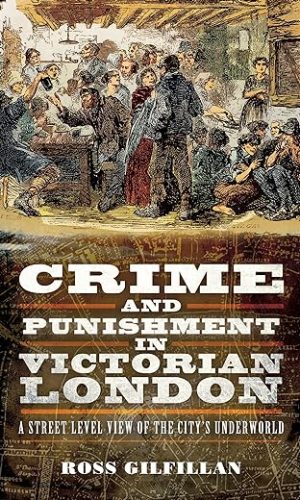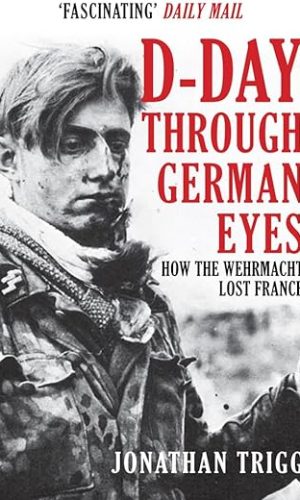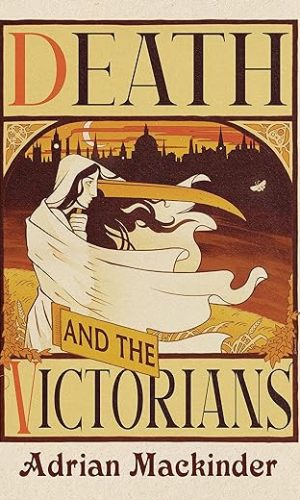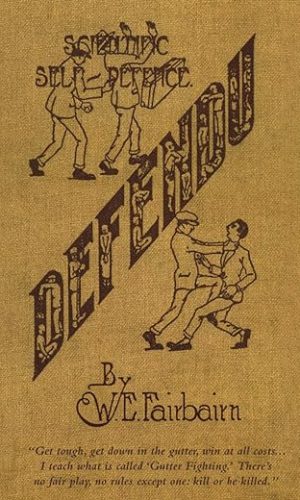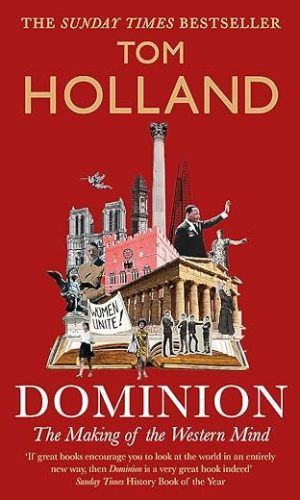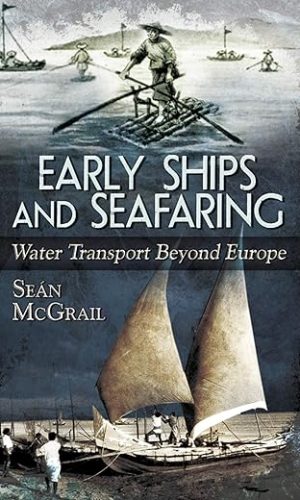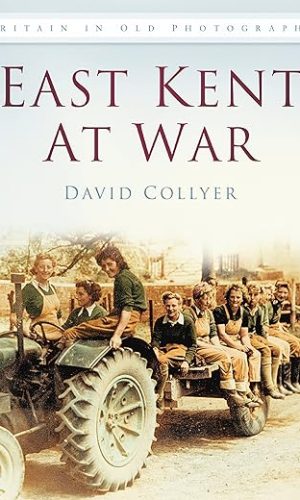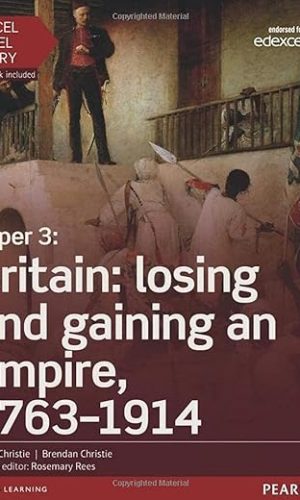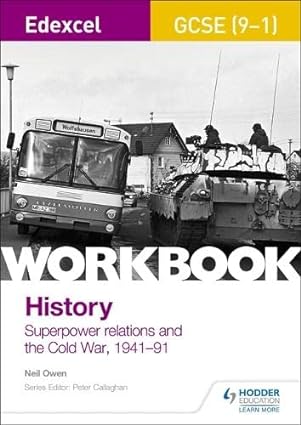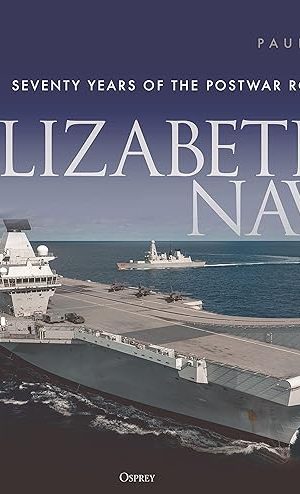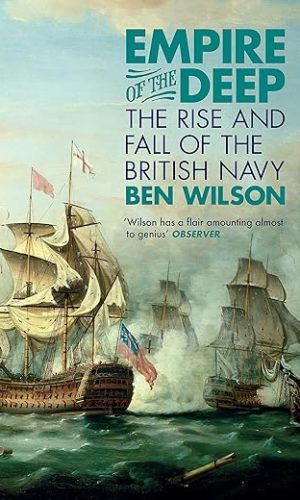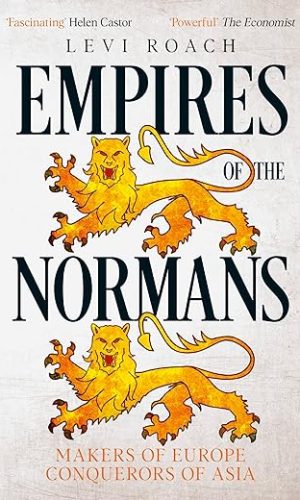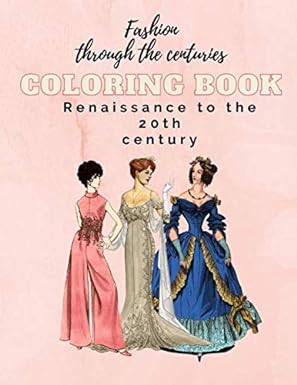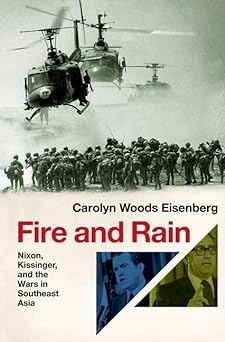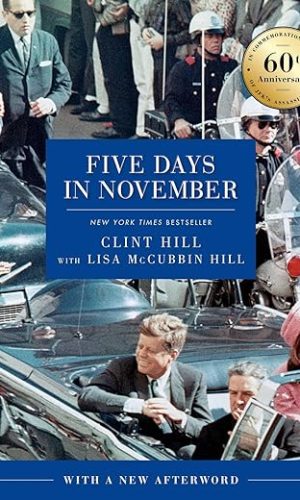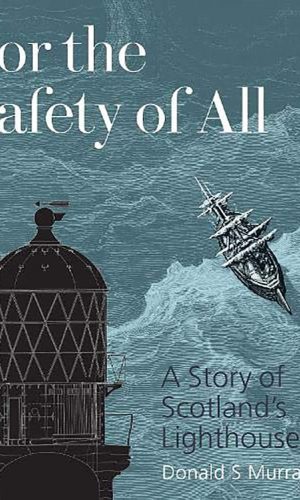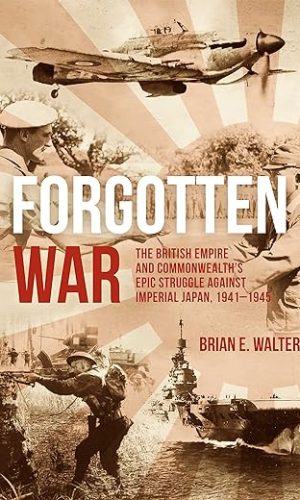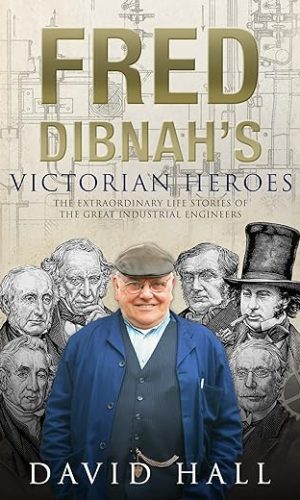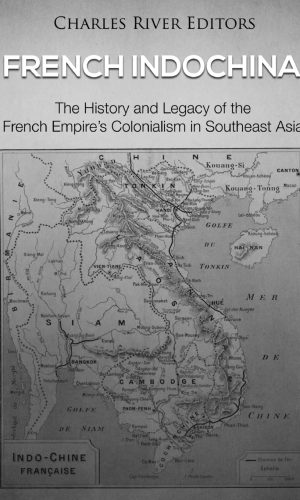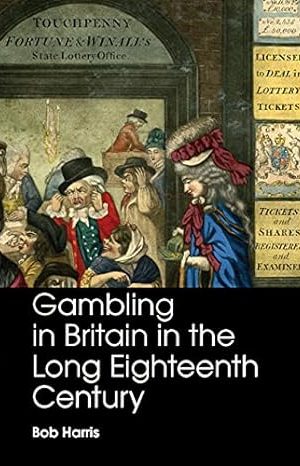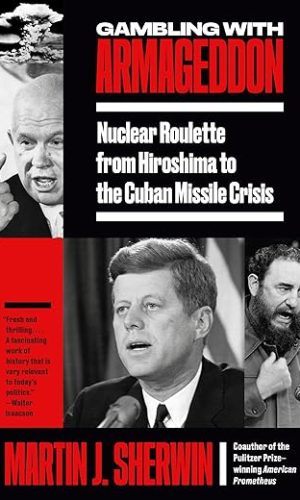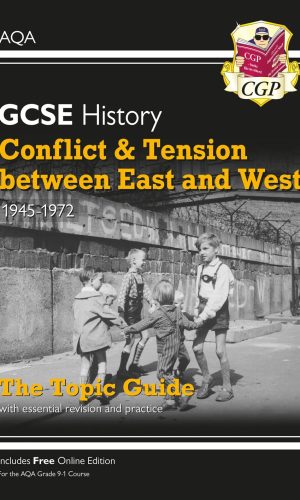-
Civil War: The History of England Volume III (The History of England, 3)
In Civil War, Peter Ackroyd continues his dazzling account of England’s history, beginning with the progress south of the Scottish king, James VI, who on the death of Elizabeth I became the first Stuart king of England, and ends with the deposition and flight into exile of his grandson, James II.
The Stuart dynasty brought together the two nations of England and Scotland into one realm, albeit a realm still marked by political divisions that echo to this day. More importantly, perhaps, the Stuart era was marked by the cruel depredations of civil war, and the killing of a king.
Ackroyd paints a vivid portrait of James I and his heirs. Shrewd and opinionated, the new King was eloquent on matters as diverse as theology, witchcraft and the abuses of tobacco, but his attitude to the English parliament sowed the seeds of the division that would split the country in the reign of his hapless heir, Charles I. Ackroyd offers a brilliant – warts and all – portrayal of Charles’s nemesis Oliver Cromwell, Parliament’s great military leader and England’s only dictator, who began his career as a political liberator but ended it as much of a despot as ‘that man of blood’, the king he executed.
England’s turbulent seventeenth century is vividly laid out before us, but so too is the cultural and social life of the period, notable for its extraordinarily rich literature, including Shakespeare’s late masterpieces, Jacobean tragedy, the poetry of John Donne and Milton and Thomas Hobbes’ great philosophical treatise, Leviathan. Civil War also gives us a very real sense of the lives of ordinary English men and women, lived out against a backdrop of constant disruption and uncertainty.
Read more
£13.60£16.10 -
Cold War: For Forty-five Years the World Held its Breath
Cold War is the story of the half-century since the end of the Second World War – the story of our lives. Its framework is the confrontation, military and ideological, between two great powers that dominated the world during these years. It is a story of crises and conflict on a global scale: from the Berlin Blockade and the Cuban Missile Crisis, to the tanks in the streets of Warsaw, Budapest and Prague, to spies, student riots and encounters in space.
In Cold War, Jeremy Isaacs and Taylor Downing record epic history through the detail of individual human experience: the recollections not only of statesmen whose decisions led to these momentous events, but also of the ordinary men and women whose lives were bound up in these years of conflict. Cold War is the first comprehensive history for the general reader to benefit from the recent opening of Soviet, East European and Chinese archives as well as formerly classified American documents. In a driving narrative that it both gripping and informative, the true story of the Cold War can at last be told.Read more
£12.90£14.20 -
Conflict and Tension between East and West 1945-1972 Revision Guide: Get Revision with Results (Oxford AQA GCSE History)
This Conflict and Tension between East and West 1945-1972 Revision Guide is part of the popular Oxford AQA GCSE History (9-1) series. Written by our original author team to match the new AQA specification, this guide covers exactly what your students require to succeed in the Paper 1 Conflict and Tension between East and West Wider World Depth Study exams.
– Recap key events of the Cold War with clear visual diagrams and brief points
– Apply knowledge with targeted revision activities that tests basic comprehension, then apply understanding towards exam-style questions
– Review and track revision with progress checklists, suggested activity answers and Exam Practice sections
– Step-by-step exam guidance based on the popular ‘How to’ student book feature
– Examiner Tip features most up-to-date expert advice and identifies common exam mistakes
– Boost student confidence on all AQA GCSE Conflict and Tension question types with revision activities such as Source Analysis and How Far Do You Agree
– Perfect for use alongside the Student Book and Kerboodle, or as a stand-alone resource for independent revision.
This revision guide helps your students Recap, Apply, and Review their way towards exam success.Read more
£7.40 -
Conflict and Tension in Asia 1950-1975 Revision Guide: Get Revision with Results (Oxford AQA GCSE History)
This Conflict and Tension in Asia 1950-1975 Revision Guide is part of the popular Oxford AQA GCSE History series. Written by our original author team to match the new AQA specification, this guide covers exactly what your students require to succeed in the Paper 1 Conflict and Tension in Asia Wider World Depth Study exams.
– Recap key events with clear visual diagrams and brief points
– Apply knowledge with targeted revision activities that tests basic comprehension, then apply understanding towards exam-style questions
– Review and track revision with progress checklists, suggested activity answers and Exam Practice sections
– Step-by-step exam guidance based on the popular ‘How to’ student book feature
– Examiner Tip features most up-to-date expert advice and identifies common exam mistakes
– Boost student confidence on all AQA GCSE Conflict and Tension question types with revision activities such as Source Analysis and How Far Do You Agree
– Perfect for use alongside the Student Book and Kerboodle, or as a stand-alone resource for independent revision.
This revision guide helps your students Recap, Apply, and Review their way towards exam success.Read more
£7.40 -
Conflict: A Military History of the Evolution of Warfare from 1945 to Ukraine
‘A HUGELY IMPORTANT BOOK … ELEGANTLY WRITTEN AND PERSUASIVELY ARGUED’ DAILY TELEGRAPH, FIVE-STAR REVIEW
Two leading authorities – a bestselling historian and the outstanding battlefield commander and strategist of our time – collaborate on a landmark examination of war since 1945.
Conflict is both a sweeping history of the evolution of warfare up to Putin’s invasion of Ukraine, and a penetrating analysis of what we must learn from the past, and anticipate in the future, in order to navigate an increasingly perilous world.
In this deep and incisive study, General David Petraeus, the former CIA director who commanded the US-led coalitions in both Iraq and Afghanistan, and the prize-winning historian Andrew Roberts, explore over seventy years of conflict, drawing significant lessons and insights from their fresh analysis of the past. Petraeus and Roberts show how often critical mistakes have been repeated time and again, and explore the challenge, for statesmen and generals alike, of learning to adapt to various new weapon systems, theories and strategies. Among the conflicts examined are the Arab – Israeli wars, the Korean and Vietnam wars, the two Gulf wars, the Balkan wars in the former Yugoslavia, and both the Soviet and Coalition wars in Afghanistan, as well as guerrilla conflicts in Africa and South America.
Conflict culminates with a bracing look at Putin’s disastrous invasion of Ukraine, yet another case study in the tragic results that occur when leaders refuse to learn from history, and an assessment of the nature of future warfare. Filled with sharp insight and the wisdom of experience, Conflict is not only a critical assessment of our recent past, but also an essential primer of modern warfare that provides crucial knowledge for waging battle today as well as for understanding what the decades ahead will bring.
‘This collaboration between a famous general and a distinguished author is a marriage made in heaven. The book’s narrative is seamless, sustained by comparative judgements, and calculated to challenge the professional and enlighten the generalist’ PROFESSOR SIR HEW STRACHAN, Chichele Professor of History of War
‘Not since Clausewitz’ On War has a book provided so much insight into the nature of warfare. Deeply researched, brilliantly constructed and thoroughly entertaining, Conflict gets to the heart of why some nations win and others lose during war. It is a book that will shape the thinking of policy makers and military strategists for generations to come’ ADMIRAL WILLIAM H. MCRAVEN, US Navy ( Ret .); former Commander of US Special Operations Command
Read more
£19.90£24.70 -
Connecting History: National 4 & 5 The Era of the Great War, 1900–1928
Exam board: SQA
Level: National 4 & 5
Subject: History
First teaching: September 2017
First assessment: Summer 2018Fresh stories, fresh scholarship and a fresh structure. Connecting History informs and empowers tomorrow’s citizens, today.
Bringing together lesser-told narratives, academic excellence, accessibility and a sharp focus on assessment success, this series provides a rich, relevant and representative History curriculum.
> Connect the past to the present. Overarching themes of social justice, equality, change and power help students to understand the importance of events and issues, then and now.
> Go far beyond other resources. With respect and aspiration for the transformative power of History, this series incorporates the latest research, challenges old interpretations and embeds diverse experiences throughout.
> Follow a clear and consistent structure. The key issues in the N5 specification form the chapters in each book, and the content descriptors are subheadings within the chapters. Finding the information that you need has never been easier.
> Meet the demands of the assessments. Connecting History develops the knowledge and skills for success, with appropriate breadth, depth and pace. The narrative and sources take centre stage and the authors model the process of answering questions effectively through that narrative, ensuring that students know all the key points that they need to. Activities throughout each chapter consolidate and extend learning.
> Benefit from pedagogic and academic expertise. The authors are highly experienced teachers and examiners who know how to spark critical curiosity in students. Each book has been rigorously reviewed by an academic from the University of Glasgow, so you can rest assured that the content is accurate and up to date.
Read more
£16.10 -
Connecting History: National 4 & 5 The Wars of Independence, 1286–1328
Exam board: SQA
Level: National 4 & 5
Subject: History
First teaching: September 2017
First assessment: Summer 2018Fresh stories, fresh scholarship and a fresh structure. Connecting History informs and empowers tomorrow’s citizens, today.
Bringing together lesser-told narratives, academic excellence, accessibility and a sharp focus on assessment success, this series provides a rich, relevant and representative History curriculum.
> Connect the past to the present. Overarching themes of social justice, equality, change and power help students to understand the importance of events and issues, then and now.
> Go far beyond other resources. With respect and aspiration for the transformative power of History, this series incorporates the latest research, challenges old interpretations and embeds diverse experiences throughout.
> Follow a clear and consistent structure. The key issues in the N5 specification form the chapters in each book, and the content descriptors are subheadings within the chapters. Finding the information that you need has never been easier.
> Meet the demands of the assessments. Connecting History develops the knowledge and skills for success, with appropriate breadth, depth and pace. The narrative and sources take centre stage and the authors model the process of answering questions effectively through that narrative, ensuring that students know all the key points that they need to. Activities throughout each chapter consolidate and extend learning.
> Benefit from pedagogic and academic expertise. The authors are highly experienced teachers and examiners who know how to spark critical curiosity in students. Each book has been rigorously reviewed by an academic from the University of Glasgow, so you can rest assured that the content is accurate and up to date.
Read more
£16.10 -
Crime and Punishment in Victorian London: A Street-Level View of London’s Underworld: A Street-Level View of the City’s Underworld
‘Crime loomed large in the minds of Victorian Londoners. All over the city, watches, purses and handkerchiefs disappear from pockets, goods migrate from warehouses, off docks and out of shop windows. Burglaries are rife, shoplifting is carried on in West End stores and people fall victim to all kinds of ingenious swindles. ‘Pornographers proliferate and an estimated 80,000 prostitutes operate on London’s streets. The vulnerable are robbed in dark alleys or garroted, a new kind of mugging in which the victim is half-strangled from behind while being stripped of his possessions…’ Discover Victorian London’s grimy rookeries, home to thousands of the city’s poorest and most desperate residents. Explore the crime-ridden slums, flash houses and gin palaces from a unique street-level view and meet the people who inhabited them. Ross Gilfillan uncovers London’s lost criminal past in this fascinating account of nineteenth century low-life. Come face to face with pickpockets snatching pocket watches; pornographers peddling guides to lewd London; swindlers deluding the unwary and murderers whose deeds made the headlines and shocked their readers; right through to the consequences of their crimes – prison, transportation, or the gallows!Read more
£10.10£12.30 -
Culture, Politics and Sport: Britain in the 20th Century: Bitesize Britain (Bitesize Britain: Britain in the 20th Century)
Explore the captivating journey of Britain through the 20th century with “Culture, Politics and Sport: Britain in the 20th Century”. This compelling book takes readers on a unique voyage through time, offering bite-sized chunks of social history that delve into the cultural, political, and sporting landscapes of each decade. From the dawn of the new century to the eve of the new millennium, this bite-sized guide provides an insightful and engaging account of Britain’s transformation over 100 years. Each decade is explored in a dedicated chapter, allowing readers to gain an understanding of the key events, societal shifts, and influential figures that shaped Britain. From the Roaring Twenties to the swinging 1960s and from the turbulent 1980s to the dawn of the digital age, the book offers a panoramic view of the nation’s social fabric.
The book seamlessly weaves together the intertwined threads of culture, politics and sport, revealing their impact on the British society throughout the 20th century. Discover how the arts, music, and literature evolved, reflecting the changing values and aspirations of the people. Uncover the political upheavals that shaped the nation, from the suffrage movement and the rise and fall of political ideologies to the transformative post-war welfare state. And dive into the world of British sport, where heroes were made, records were broken, and moments of triumph and heartbreak captured the nation’s spirit.
Through a combination of engaging storytelling and concise historical analysis, “Culture, Politics and Sport: Britain in the 20th Century” brings history to life. Whether you’re a history enthusiast or simply curious about the past, this book provides a fascinating exploration of the transformative events and social dynamics that have shaped modern Britain.
Read more
£14.20 -
D-Day Through German Eyes: How the Wehrmacht Lost France
Everyone is familiar with the story of D-Day and the triumphal liberation of France by the Allies: a barbaric enemy was defeated by Allied ingenuity, courage and overwhelming military force, helped by dreadful German command errors and the terrible state of Wehrmacht forces in the West – but is this all true? The Wehrmacht was hugely experienced, equipped with some of the best weaponry of the war and was holding its own in Italy and Russia at the time. Berlin knew the invasion was coming and had had years to prepare for it. So how did the Germans view the impending invasion and campaign, did they feel ready, what forces did they have and could they have done better? Previous histories have focused on the ‘clash of the generals’; the battle between von Runstedt and Eisenhower, Montgomery and Rommel, but on the German side in particular this was a battle that would be fought by divisional and regimental commanders; the ‘German D-Day colonels’ upon whom the real business of trying to defeat the invasion fell – it was they and their men, outnumbered and outgunned, who somehow held Normandy for ten whole weeks against the greatest seaborne invasion force ever assembled, and occasionally even came close to defeating it. In the end they lost, and the majority of these unsung leaders ended up killed, wounded or captured in the fighting. As for their men, they ranged from élite Waffen-SS stormtroopers through to bewildered teenagers, old men, ‘recycled’ invalids and even anti-communist Eastern legions. Written from the ‘other side’ and told through the words of the veterans, this book is a revelation.Read more
£8.70£9.50 -
Deal & District at War
Much emphasis has been given to the Second World War experiences of East Kent’s ‘frontline’ towns of Dover, Folkestone and Thanet, but the ancient port and town of Deal suffered equally from enemy bombing and shelling. Deal bore the disadvantage of being located opposite the notorious Goodwin Sands, where many vessels and even some aircraft were lost. From the time of the Dunkirk evacuation in May/June 1940 until after D-Day some four years later, the residents of Deal withstood all that the enemy threw at them. Richly illustrated, Deal and District at War recounts many unique and controversial events which include: a German coastal raid in Sandwich Bay when at least 1 British soldier was snatched; an enemy pilot entertained by a local family after being shot down; cases of smuggling and ‘services rendered’ by Walmer lifeboat; and the world-famous ‘Lifeboat Doctor’ James Hall. This book will evoke powerful memories for those whose families experienced the war and provide fascinating reading for anyone interested in the history of Deal and District.
Read more
£12.20£14.20Deal & District at War
£12.20£14.20 -
Death and the Victorians: A Dark Fascination
From spooky stories and real-life ghost hunting, to shows about murder and serial killers, we are fascinated by death – and we owe these modern obsessions to the Victorian age. Death and the Victorians explores a period in history when the search for the truth about what lies beyond our mortal realm was matched only by the imagination and invention used to find it. Walk among London’s festering graveyards, where the dead were literally rising from the grave. Visit the Paris Morgue, where thousands flocked to view the spectacle of death every single day. Lift the veil on how spirits were invited into the home, secret societies taught ways to survive death, and the latest science and technology was applied to provide proof of the afterlife. Find out why the Victorian era is considered the golden age of the ghost story, exemplified by tales from the likes of Charles Dickens, Elizabeth Gaskell, Oscar Wilde and Henry James. Discover how the birth of the popular press nurtured our taste for murder and that Jack the Ripper was actually a work of pure Gothic horror fiction crafted by cynical Victorian newspapermen. Death and the Victorians exposes the darker side of the nineteenth century, a time when the living were inventing incredible ways to connect with the dead that endure to this day.Read more
£19.00 -
Death, Disease & Dissection: The Life of a Surgeon-Apothecary 1750–1850
“A deep dive into the education and lives of a medical professional’s life over the span of 100 years . . . A good addition to any medical historian’s library” (The Lazy Historian).
Imagine performing surgery on a patient without anesthetic or administering medicine that could kill or cure. Welcome to the world of the surgeon-apothecary.
During the eighteenth and nineteenth centuries, significant changes occurred in medicine. New treatments were developed and medical training improved. Yet, with doctors’ fees out of the reach of ordinary people, most relied on the advice of their local apothecary, among them, the poet John Keats, who worked at Guy’s Hospital in London. These men were the general practitioners of their time, making up pills and potions for everything from toothache to childbirth.
Death, Disease & Dissection examines the vital role these men played within their communities, their training, the treatments they offered, the quacks, and the shocking sights and sounds in hospitals and operating theaters of the time. Suzie Grogan transports readers through 100 years of medical history, exploring the impact of illness and death and bringing the experiences of the surgeon-apothecary vividly to life.
“I think the author has done a wonderful job of researching the topic and presenting the history of the profession, and biographical information on some of the most influential Surgeon-Apothecaries of the period. . . . This book is well organized and full of fascinating information on the topic.” —A Line from a BookRead more
£3.80 -
DEFENDU: Scientific Self-Defence
The Fairbairn’s system was based on his training and knowledge in boxing, wrestling, savate, jujutsu, judo and fights he was involved in during his police work, Fairbairn began to develop his own system of hand to hand combat, initially referring it as Defendu. It was designed to be simple to learn and to provide effective results. Fairbairn published his book, Defendu, in 1926[2] (reprinted as Scientific Self Defence in 1931), illustrating this method and it is here that the term Defendu first appeared This confused early readers of the book, who assumed that the techniques within had been based mainly in the Eastern martial arts that Fairbairn had learned. Thus, in an attempt to highlight the originality of Fairbairn’s material, the term did not appear in the 1931 edition of the book. Fairbairn was called upon by the British to help train and riot control. The original Defendu was oriented towards self-defence and Allied troops in World War II. Fairbairn and others expanded on this system to create the Close Quarters Combat system that was then taught to the troops. This system was built on Defendu, but modified for military applications, rather than policerestraint, while the Close Quarters Combat system concentrated on rapid disabling of an opponent, with potentially lethal force. The militarised version of Defendu is described in the military manual All in fighting 1942, used as a supplement during WW2 CQB-training. This book was later published in a civilian edition, missing the chapters on bayonet-fighting and rifle sighting, under the name Get Tough! How To Win In Hand-To-Hand Fighting. As Taught To The British Commandos And The U.S. Armed Forces.Read more
£7.60 -
Dominion: The Making of the Western Mind
‘If great books encourage you to look at the world in an entirely new way, then Dominion is a very great book indeed . . . Written with terrific learning, enthusiasm and good humour, Holland’s book is not just supremely provocative, but often very funny’ Sunday Times History Book of the Year
Christianity is the most enduring and influential legacy of the ancient world, and its emergence the single most transformative development in Western history. Even the increasing number in the West today who have abandoned the faith of their forebears, and dismiss all religion as pointless superstition, remain recognisably its heirs. Seen close-up, the division between a sceptic and a believer may seem unbridgeable. Widen the focus, though, and Christianity’s enduring impact upon the West can be seen in the emergence of much that has traditionally been cast as its nemesis: in science, in secularism, and yes, even in atheism.
That is why Dominion will place the story of how we came to be what we are, and how we think the way that we do, in the broadest historical context. Ranging in time from the Persian invasion of Greece in 480 BC to the on-going migration crisis in Europe today, and from Nebuchadnezzar to the Beatles, it will explore just what it was that made Christianity so revolutionary and disruptive; how completely it came to saturate the mind-set of Latin Christendom; and why, in a West that has become increasingly doubtful of religion’s claims, so many of its instincts remain irredeemably Christian. The aim is twofold: to make the reader appreciate just how novel and uncanny were Christian teachings when they first appeared in the world; and to make ourselves, and all that we take for granted, appear similarly strange in consequence. We stand at the end-point of an extraordinary transformation in the understanding of what it is to be human: one that can only be fully appreciated by tracing the arc of its parabola over millennia.
Read more
£6.20£12.30Dominion: The Making of the Western Mind
£6.20£12.30 -
Early Ships and Seafaring: Water Transport Beyond Europe
In this volume Professor Sen McGrail introduces the reader to a relatively new branch of Archaeology the study of water transport how early rafts, boats and ships were built and used. Concepts, such as boatbuilding traditions, ship stability and navigation without instruments, are first described. Archaeological research is then discussed, including sea levels in earlier times, how to distinguish the vestigial remains of a cargo vessel from those of a fighting craft; and the difference between a boat and a ship.Chapters 2 and 3, the heart of the text, deal with the early water transport of the Mediterranean and Atlantic Europe, from the Stone Age to Medieval times. Each chapter includes a description of the region’s maritime geography and an exposition of its boat-building traditions. The third element is a discussion of the propulsion, the steering and the navigation of these early vessels.The sparse, often jumbled, remains of excavated vessels have to be interpreted, a process that is assisted by consideration of early descriptions and illustrations. Studies of the way traditional builders of wooden boats ply their trade today are also a great help. Experimental boat archaeology is still at an early stage but, when undertaken rigorously, it can reveal aspects of the vessel’s capabilities. Such information is used in this volume to further our understanding of data from boat and ship excavations, and to present as coherent, comprehensive and accurate a picture as is now possible, of early European boatbuilding and use.Read more
£4.70 -
East Kent at War: Britain in Old Photographs
During the Second World War, East Kent was at the forefront of the defence of the United Kingdom. In 1940 the ports of Dover, Ramsgate, Folkestone and Margate took part in the Dunkirk evacuation, while airfields such as Manston, Hawkinge and Lympne were active in refuelling aircraft involved in the Battle of Britain.
It was also from Dover that the first steps for D-Day were initiated, with commando raids on French beaches from Royal Navy motor launches. German signals were monitored and subsequently jammed by a series of experimental units. Balloons launched from Kingsdown carried leaflets to enemy territory, while others defended harbours and factories from dive bombers.
Throughout the remainder of the war, including the defence against the V1 flying bomb attacks of the summer of 1944 and the supply of both men and material to the allies as they advanced through Europe, East Kent played a vital role.
Read more
£9.70£14.20East Kent at War: Britain in Old Photographs
£9.70£14.20 -
Edexcel A Level History, Paper 3: Britain: losing and gaining an empire, 1763-1914 Student Book + ActiveBook (Edexcel GCE History 2015)
This book:
- covers the essential content in the new specifications in a rigorous and engaging way, using detailed narrative, sources, timelines, key words, helpful activities and extension material
- helps develop conceptual understanding of areas such as evidence, interpretations, causation and change, through targeted activities
- provides assessment support for A level with sample answers, sources, practice questions and guidance to help you tackle the new-style exam questions.
It also comes with three years’ access to ActiveBook, an online, digital version of your textbook to help you personalise your learning as you go through the course – perfect for revision.
Read more
£19.90£21.60 -
Edexcel GCSE (9-1) History Workbook: Superpower relations and the Cold War, 1941-91
Exam board: Edexcel
Level: GCSE
Subject: History
First teaching: September 2016
First exams: Summer 2018Practise and perfect the knowledge and skills that students need to achieve their best grade in the Edexcel GCSE (9-1) History exams.
Packed full of consolidation activities and exam-style questions, this time-saving Workbook makes it easier to reinforce understanding throughout the course and prepare for examination.
– Apply, embed and recap knowledge using tried-and-tested consolidation activities that put the large amount of content into context
– Develop the exam skills required for the 9-1 examinations with a bank of practice questions that covers every question type and includes mark allocations to indicate how much time students should spend on an answer
– Help students identify their revision needs and understand how to improve their responses by consulting the online answers/answer guidance for each activity and question
– Use flexibly for homework or classwork, during the course or for revision and exam practice
– Feel confident about exam preparation, knowing that the activities and questions have been carefully created by a team of experienced examiners and practising teachers
Read more
£5.70 -
Elizabeth II: Princess, Queen, Icon
With just under a thousand portraits of Queen Elizabeth II, the National Portrait Gallery boasts some of the most treasured and famous official portraits of the Queen captured at key historic moments, as well as day-to-day images of the monarch at home and with family, following her journey from childhood, to princess and Queen, mother and grandmother. This publication highlights the most important portraits of Elizabeth II from the Gallery’s Collection. Paintings and photographs from the birth of Elizabeth II to the present will take readers on a visual journey through the life of Britain’s foremost icon.The book will reflect on the Queen’s life, presenting family photographs alongside important formal portraits to explore how, as her reign became record-breaking, she became an iconic figure in modern British culture and history. The publication features works by key artists depicting the Queen from 1926 to the present day, including Baron, Cecil Beaton, Dorothy Wilding, Patrick Lichfield, Andy Warhol, Annie Leibovitz and David Bailey.
This book features an introductory essay by Alexandra Shulman, exploring how the collected portraits depict the Queen throughout her life and reign, and a timeline of key historical events and moments from Elizabeth II’s life.
Read more
£11.60£14.20Elizabeth II: Princess, Queen, Icon
£11.60£14.20 -
Elizabeth’s Navy: Seventy Years of the Postwar Royal Navy
With over 260 images, this is a highly illustrated history of the ships and operations of the Royal Navy during the reign of the late Queen Elizabeth II.
During the 70 years spanned by the reign of the late Queen Elizabeth II, the Royal Navy changed out of all recognition. Its status as a superpower navy with worldwide bases and operations has been eclipsed, but it remains a powerful force because of its potency if not its size. Maritime history author Paul Brown takes us through each decade in turn, outlining the key events and developments, and charting the changes to the size, structure and capabilities of the Navy.
Fully illustrated with over 260 colour and black and white images, this book also provides a stunning visual record of the ships and operations that featured most prominently in each decade.
Read more
£34.10£42.80 -
Empire of the Deep: The Rise and Fall of the British Navy
The bestselling complete history of the British Navy – our national story through a different prism.
The story of our navy is nothing less than the story of Britain, our culture and our empire. Much more than a parade of admirals and their battles, this is the story of how an insignificant island nation conquered the world’s oceans to become its greatest trading empire. Yet, as Ben Wilson shows, there was nothing inevitable about this rise to maritime domination, nor was it ever an easy path.
EMPIRE OF THE DEEP: THE RISE AND FALL OF THE BRITISH NAVY also reveals how our naval history has shaped us in more subtle and surprising ways – our language, culture, politics and national character all owe a great debt to this conquest of the seas. This is a gripping, fresh take on our national story.
Read more
£4.30£16.10 -
Empires of the Normans: Makers of Europe, Conquerors of Asia
‘Powerful’ The Economist
‘Fascinating, panoramic . . . Roach brings an expert eye and page-turning energy’ Helen Castor, bestselling author of She Wolves
‘Narrated with pace, clarity, authority and style, Roach’s book is a bracing tour of the world that the Normans made their own’ Thomas Williams, bestselling author of Viking Britain
‘A fresh retelling . . . written with enthusiasm and brio’ Marc Morris, bestselling author of The Anglo-Saxons
How did descendants of Viking marauders come to dominate Europe, the Mediterranean and the Middle East?
It is a tale of ambitious adventures and fierce freebooters, of fortunes made and fortunes lost. The Normans made their influence felt across all of western Europe and the Mediterranean, from the British Isles to North Africa, and Lisbon to the Holy Land. In Empires of the Normans we discover how they combined military might and political savvy with deeply held religious beliefs and a profound sense of their own destiny. For a century and a half, they remade Europe in their own image, and yet their heritage was quickly forgotten – until now.
Read more
£4.70 -
Enemies and Neighbours: Arabs and Jews in Palestine and Israel, 1917-2017
ECONOMIST, SUNDAY TIMES, FINANCIAL TIMES AND GUARDIAN BOOKS OF THE YEAR 2017
‘Comprehensive and compelling … A nuanced, landmark study that has deservedly won plaudits from both Palestinian and Israeli historians’ Justin Marozzi, The Times
A century after Britain’s Balfour Declaration promised a Jewish ‘national home’ in Palestine, veteran Guardian journalist Ian Black has produced a major new history of one of the most polarising conflicts of the modern age.
Drawing on a wide range of sources – from declassified documents to oral testimonies and his own decades of reporting – Enemies and Neighbours brings much-needed perspective and balance to the long and unresolved struggle between Arabs and Jews in the Holy Land.
Beginning in the final years of Ottoman ruleand the British Mandate period, when Zionist immigration transformed Palestine in the face of mounting Arab opposition, the book re-examines the origins of what was a doomed relationship from the start. It sheds fresh light on critical events such as the Arab rebellion of the 1930s; Israel’s independence and the Palestinian catastrophe (Nakba in Arabic) of 1948; the watershed of the 1967 war; two Intifadas; the Oslo Accords and Israel’s shift to the right. It traces how – after five decades of occupation, ever-expanding Jewish settlements and the construction of the West Bank ‘separation wall’ – hopes for a two-state solution have all but disappeared, and explores what the future might hold.
Yet Black also goes beyond the most newsworthy events – wars, violence and peace initiatives – to capture thereality of everyday life on the ground in Jerusalem and Hebron, Tel Aviv,Ramallah, Haifa and Gaza, for both sides of an unequal struggle. Lucid, timelyand gripping, Enemies and Neighbours illuminates a bitter conflict that shows no sign of ending – which is why it is so essential that we understand it.
Read more
£13.30£16.10 -
Faithful Through Hard Times: The uncensored story of WW2 Malta
“This is a moving story played out by every serving soldier when war dislocates families and taxes friendships.” Colonel (retired)Walter Bonnici, RAMC
Four years, 3 million bombs, one small island out-facing the might of the German and Italian air forces – and one young Scotsman who didn’t want to be there. The true story of WW2 Malta from an eye-witness account written at the time in a secret diary, a diary too dangerous to show anyone, and too precious to destroy.
Private George Taylor arrived on Malta in 1940 thinking that shiny buttons would earn him fast promotion; he left four years later, a cynical sergeant and a Master Freemason who never said, ‘I was there, ‘ without a bitter smile. Despite the times he said, ‘It’s me for the next boat’, despite his fears that Nettie had forgotten him, George kept the motto of the Royal Army Medical Corps ‘In arduis fidelis’, ‘faithful through hard times’ and only told his diary the inside story of four long years.
Now, the truth can be told.
‘Based on words and feelings recorded at the time it is probably unique.’ Don Marshall, Military History Enthusiast
www.jeangill.com
Read more
£2.90 -
Fashion through the centuries coloring book: Renaissance to the 20th century, Victorian, colonial America, baroque, rococo, historical clothing, … women style in time, decades…
Fashion through the centuries coloring book- 50 illustrations of dresses through the centuries. Put color to the inspirational pictures of clothing. Look how clothes looked at the Victorian era, the 20s or why not in renaissance style. Perfect for the history interested, fashion lovers, costume designers, girls, women, mom, friend or cultural historians. Relax and start experimenting with colors.Read more
£6.60 -
Fear: An Alternative History of the World
It’s been said that, after 9/11, the 2008 financial crash and the Covid-19 pandemic, we’re a more fearful society than ever before. Yet fear, and the panic it produces, have long been driving forces – perhaps the driving force – of world history: fear of God, of famine, war, disease, poverty, and other people. In Fear: An Alternative History of the World, Robert Peckham considers the impact of fear in history, as both a coercive tool of power and as a catalyst for social change.
Beginning with the Black Death in the fourteenth century, Peckham traces a shadow history of fear. He takes us through the French Revolution and the social movements of the nineteenth century to modern market crashes, Cold War paranoia and the AIDS pandemic, into a digital culture increasingly marked by uniquely twenty-first-century fears.
What did fear mean to us in the past, and how can a better understanding of it equip us to face the future? As Peckham demonstrates, fear can challenge as well as cement authority. Some crises have destroyed societies; others have been the making of them. Through the stories of the people and the moments that changed history, Fear: An Alternative History of the World reveals how fear and panic made us who we are.
Read more
£19.60£23.80Fear: An Alternative History of the World
£19.60£23.80 -
Fire and Rain: Nixon, Kissinger, and the Wars in Southeast Asia
This gripping account interweaves Nixon and Kissinger’s pursuit of the war in Southeast Asia and their diplomacy with the Soviet Union and China with on-the-ground military events and US domestic reactions to the war conducted in Vietnam, Laos, and Cambodia.Fire and Rain is a compelling, meticulous narrative of the way national security decisions formed at the highest levels of government affect the lives of individuals at home and abroad. By drawing these connections, Carolyn Woods Eisenberg brings to life policy decisions about Vietnam, Laos, and Cambodia, conveying their significance to a new generation of readers. She breaks fresh ground in contextualizing Richard Nixon and Henry Kissinger’s decisions within a wider institutional and societal framework. While recognizing the distinctive personalities and ideas of these two men, this study more broadly conveys the competing roles and impact of the professional military, the Congress, and a mobilized peace movement.
Drawing upon a vast collection of declassified documents, Eisenberg presents an important re-interpretation of the Nixon Administration’s relations with the Soviet Union and China vis a vis the war in Southeast Asia. She argues that in their desperate effort to overcome, or at least overshadow, their failure in Vietnam, Nixon and Kissinger made major concessions to both nations in the field of arms control, their response to the India-Pakistan war, and the diplomacy surrounding Taiwan–much of this secret. Despite policymakers’ claims that the Vietnam War was a “national security” necessity that would demonstrate American strength to the communist superpowers and “credibility” to friendly governments, the historical record suggests a different reality.
A half-century after the Paris Peace Conference marking the withdrawal of US troops and advisors from Vietnam and foreign troops from Laos and Cambodia, Fire and Rain is a dramatic account of geopolitical decision making, civil society, and the human toll of the war on the people of Southeast Asia.
Read more
£23.10£24.70 -
Five Days in November: In Commemoration of the 60th Anniversary of JFK’s Assassination
Secret Service agent Clint Hill reveals the stories behind the iconic images of the five tragic days surrounding President John F. Kennedy’s assassination in this 60th anniversary edition of the New York Times bestseller.On November 22, 1963, three shots were fired in Dallas, President John F. Kennedy was assassinated, and the world stopped for four days. For an entire generation, it was the end of an age of innocence.
That evening, a photo ran on the front pages of newspapers across the world, showing a Secret Service agent jumping on the back of the presidential limousine in a desperate attempt to protect the President and Mrs. Kennedy. That agent was Clint Hill.
Now Hill commemorates the sixtieth anniversary of the tragedy with this stunning book containing more than 150 photos, each accompanied by his incomparable insider account of those terrible days. A story that has taken Hill half a century to tell, this is a “riveting, stunning narrative” (Herald & Review, Illinois) of personal and historical scope. Besides the unbearable grief of a nation and the monumental consequences of the event, the death of JFK was a personal blow to a man sworn to protect the first family, and who knew, from the moment the shots rang out in Dallas, that nothing would ever be the same.
Read more
£16.70£19.00 -
For the Safety of All: A Story of Scotland’s Lighthouses
Lighthouses punctuate Scotland’s coastline – a stoic presence on the edge of the landscape. Since the earliest of these hardy structures were raised, they have been a lifeline for seafarers at the mercy of treacherous weather and uncertain navigation. Today over 100 of Scotland’s lighthouses are listed buildings.
The lighthouse is now one of many maritime resources which act ‘for the safety of all’. But we are still drawn to the solitary life of the keeper, the beauty of the lens of the lamp and the calm reassurance of a flashing light on a distant shore.
Donald S Murray explores Scotland’s lighthouses through history, storytelling and the voices of the lightkeepers. From ancient beacons to the work of the Stevensons and the Northern Lighthouse Board, and from wartime strife to automation and preservation, the lighthouses stand as a testament to the nation’s innate connection to the sea.
Published in partnership between Historic Environment Scotland and the Northern Lighthouse Board.
Read more
£13.10£14.20 -
Forbidden Signs: American Culture and the Campaign against Sign Language
Forbidden Signs explores American culture from the mid-nineteenth century to 1920 through the lens of one striking episode: the campaign led by Alexander Graham Bell and other prominent Americans to suppress the use of sign language among deaf people.The ensuing debate over sign language invoked such fundamental questions as what distinguished Americans from non-Americans, civilized people from “savages,” humans from animals, men from women, the natural from the unnatural, and the normal from the abnormal. An advocate of the return to sign language, Baynton found that although the grounds of the debate have shifted, educators still base decisions on many of the same metaphors and images that led to the misguided efforts to eradicate sign language.
“Baynton’s brilliant and detailed history, Forbidden Signs, reminds us that debates over the use of dialects or languages are really the linguistic tip of a mostly submerged argument about power, social control, nationalism, who has the right to speak and who has the right to control modes of speech.”—Lennard J. Davis, The Nation
“Forbidden Signs is replete with good things.”—Hugh Kenner, New York Times Book Review
Read more
£21.70 -
Forgotten War: The British Empire and Commonwealth’s Epic Struggle Against Imperial Japan, 1941–1945
The monumental struggle fought against Imperial Japan in the Asia/Pacific theater during World War II is primarily viewed as an American affair. While the United States did play a dominant role, the British and Commonwealth forces also made major contributions – on land, at sea and in the air – eventually involving over a million men and vast armadas of ships and aircraft. It was a difficult and often desperate conflict fought against a skilled and ruthless enemy that initially saw the British suffer the worst series of defeats ever to befall their armed forces. Still, the British persevered and slowly turned the tables on their Japanese antagonists. Fighting over an immense area that stretched from India in the west to the Solomon Islands in the east and Australia in the south to the waters off Japan in the north, British and Commonwealth forces eventually scored a string of stirring victories that avenged their earlier defeats and helped facilitate the demise of the Japanese Empire.Often overlooked by history, this substantial war effort is fully explored in Forgotten War. Meticulously researched, the book provides a complete, balanced and detailed account of the role that British and Commonwealth forces played on land, sea and in the air during this crucial struggle. It also provides unique analysis regarding the effectiveness and relevance of this collective effort and the contributions it made to the overall Allied victory.
Read more
£20.10£23.80 -
Fred Dibnah’s Victorian Heroes
Fred Dibnah was a man born out of his time. His era should have been the ‘magnificent age of British engineering’ – the nineteenth century – and his heroes were the great industrial engineers of the period whose prolific innovations and dedicated work ethic inspired a national mood of optimism and captured the hearts of the British public.
Fred Dibnah’s Victorian Heroes tells the stories of some of these men – including George and Robert Stephenson, Isambard Kingdom Brunel and Joseph Whitworth – and what it was that made them such inspirational figures to Fred. What were their backgrounds? Where did their drive and vision come from? What sort of people were they at work and at home? And what was their contribution to the history of industry and engineering?
Most of them – like Fred – were colourful, larger-than-life characters for whom no challenge was too great. Taking these fascinating characters as inspiration, Fred Dibnah’s Victorian Heroes gets to the very heart of what allowed nineteenth-century Britannia to rule the waves . . .
Read more
£5.70 -
French Indochina: The History and Legacy of the French Empire’s Colonialism in Southeast Asia
*Includes pictures
*Includes online resources and a bibliography for further reading
“Without Empire France today would only be a liberated country. Thanks to her Empire she is today a victorious country.” – French Guianan lawyer and politician, Gaston Monnerville
The U.S. Naval Station Argentia, located in Placentia Bay, a sheltered harbor on Newfoundland Island, was the unlikely setting for one of the most pivotal summit meetings of the 20th century. The meeting took place on August 9, 1941. World War II was in its second year, the British had won the Battle of Britain, but were still encircled by German U-Boats, and the British fleet was being decimated in the North Atlantic. In North Africa, a contest of armor was underway as Axis and Allied armies fought for control of Egypt, while Britain and her Commonwealth allies stood alone against the mighty German Wehrmacht.
Roosevelt, however, pictured a very different post-war world than his British counterpart, Winston Churchill. When he and Churchill met at what came to be known as the Atlantic Conference, Churchill’s pleas for U.S. manpower and aid were accepted, but only under clear conditions. If the United States was to come to the aid of Britain, it would be for the purpose of defeating the Germans and the Japanese and not to support the insupportable institutions of empire. Britain and, by extension, France and Portugal, the only remaining major European shareholders in foreign empire, would have to commit to decolonization as a basic prerequisite of substantial U.S. assistance.
Churchill, a vocal and forceful proponent of empire and a man of the generation that had conquered the world, did not receive this news well. On the other side of the world, British and allied European Asian colonies lay very much in the path of the Japanese imperial march into Southeast Asia. However, as the inevitability of war grew daily, the nationalist movement in India was also beginning to gather pace. Without India and Indian manpower, war with Japan would be lost before it could begin. The Indians in a sense could hold the British hostage, and ultimately, in exchange for Indian cooperation in the war, the British would first have to commit to a post-war independence process.
Meanwhile, the British were not the only European power to take note of this development. The French too were a major imperial power with a great deal to lose from such a monumental change, but their view of the global chessboard was somewhat different. France lay under German occupation, and an armistice had been signed on behalf of the French nation by Marshall Philippe Pétain, commencing the era of Vichy France. In London, meanwhile, the firebrand French General Charles de Gaulle urged a continuation of the resistance, believing the French mainland to be only a small part of the picture. France was much more than just France. De Gaulle established the Free French movement in Britain, based on the loyalty and the ongoing Free French control of a majority of her overseas territories. The Free French movement and the Free French army based themselves in Francophone Africa. The saga of the Free French movement would impact the war in both North Africa and Europe, but most specifically, it would serve to radically redefine the French view of itself and her relationship with her overseas territories. Most importantly, it would set the tone for a style of decolonization very different from the British, and perhaps not surprisingly, things would not go smoothly, especially with the geopolitics of the Cold War affecting matters.
French Indochina: The History and Legacy of the French Empire’s Colonialism in Southeast Asia analyzes the colonization of Southeast Asia and what happened as a result of the decolonization. Along with pictures of important people, places, and events, you will learn about the French in Southeast Asia like never before.Read more
£8.00 -
Frontline: A Soldier’s Story (War in Afghanistan)
Frontline, is the story of a single soldier out of the many thousands of soldiers fresh out of school or college who joined the British Army and found themselves within a few months of completing basic training. Being deployed to Afghanistan fighting for their lives. These modern-day heroes risked their lives on a daily basis to help bring peace to a troubled country.Imagine being 18 and sent to a foreign country with 40-degree heat, an environment that is dusty and areas that are quite inhospitable with a primeval beauty. Every step on a dusty track could be your last as your eyes strain to catch a glimpse of an IED before it is too late, just before the rounds start impacting in the dirt all around you.
Read more
£5.20 -
Gambling in Britain in the Long Eighteenth Century
English society in the eighteenth century was allegedly marked by a ‘gambling mania’, such was the prevalence and intensity of different forms of ‘gaming’. Gambling in Britain in the Long Eighteenth Century subjects this notion to systematic scrutiny, exploring the growth and prevalence of different forms of gambling across Britain and throughout British society in this period, as well as attitudes towards it. Drawing on a vast range of new, empirical evidence, Bob Harris seeks to understand gambling, its growth, and significance within the context of wider trends and impulses in society. This book asks what light gambling practices and habits shed back onto society and the values, hopes, and expectations that informed the lives of those involved. This is a book, therefore, as much about the character of British society in the long eighteenth century as it is about gambling itself.Read more
£67.70 -
Gambling with Armageddon: Nuclear Roulette from Hiroshima to the Cuban Missile Crisis
From the Pulitzer Prize-winning author of American Prometheus comes the first effort to set the Cuban Missile Crisis, with its potential for nuclear holocaust, in a wider historical narrative of the Cold War–how such a crisis arose and why, at the very last possible moment, it never happened.“Fresh and thrilling…. A fascinating work of history that is very relevant to today’s politics.” –Walter Isaacson, bestselling author of The Code Breaker
Pulitzer Prize-winning author Martin J. Sherwin introduces a dramatic new view of how luck and leadership avoided a nuclear holocaust during the October 1962 Cuban missile crisis. Set within the sweep of the Cold War and its nuclear history, every chapter of this gripping narrative of the origins and resolution of history’s most dangerous thirteen days offers lessons and a warning for our time. Gambling with Armageddon presents a riveting, page turning account of the crisis as well as an original exploration of the evolving place of nuclear weapons in the Post-World War II world.
Read more
£12.70£14.50 -
GCSE Edexcel History Superpower relations and the Cold War, 1941–1991: Illustrated Revision and Practice (ClearRevise Edexcel GCSE History 1HI0)
Subject level: GCSE History
Exam board: Edexcel
A new generation of revision guides – from the experts at ClearRevise!
Do images help you learn?
This illustrated revision guide is perfectly matched to the GCSE Edexcel History 1HI0 Superpower relations and the Cold War specification.
Our content is expertly compiled by outstanding teachers, industry professionals and highly experienced examiners. All the key points have been clearly explained in PG Online’s signature style, and there are plenty of practice questions to check the content has really stuck. Even better, each page has been beautifully designed, so it even looks good too! It’s everything you need to be fully prepared ahead of the exam.
PG Online are multi-award-winning specialists with decades of teaching, examining and design experience.
Features:
- Over 200 marks worth of exam-style questions
- Answers provided for all questions with mark allocations
- Illustrated topics to improve memory and recall
- Specification references for every topic
- Handy, lightweight, book-bag size
- Examination tips and techniques
Read more
£5.70 -
GCSE Edexcel History: Superpower relations and the Cold War, 1941-91 (Oxford Revise: History)
Oxford Revise Edexcel GCSE History: Superpower relations and the Cold War, 1941-91 is a complete revision and practice book covering the full topic specification.Revise everything you need to know for this choice of period topic in the GCSE Edexcel History exam, from early tension between East and West to the collapse of the USSR. Each development or crisis is clearly covered.
By working through the Knowledge – Retrieval – Practice sections, you will be using proven ways to revise, check and recall so that what you revise sticks in your memory.
Knowledge Organisers arrange the information you need to revise helping you to make connections with what you already know. Timelines and charts are used so that key information is presented in a meaningful way. An online glossary helps you to learn the definitions to key terms.
Use Retrieval questions to check that you have remembered what you have just revised before moving on to the exam practice. Regular retrieval questions help to combat the forgetting curve.
Finally, exam-style Practice questions give you loads of experience of the type of question you will face in your exam. This will strengthen your ability to recall and apply knowledge in their exams. All the answers to the practice questions as well as a helpful mark scheme are provided online.
Read more
£5.70 -
GCSE History AQA Topic Guide – Conflict and Tension Between East and West, 1945-1972: for the 2024 and 2025 exams (CGP AQA GCSE History)
Perfect for achieving the best grades in 2024 and 2025. From CGP ― the GCSE experts!
This excellent CGP AQA 9-1 GCSE History – Conflict and Tension Between East and West (1945-1972) Topic Guide has everything students need for exam success! It’s packed with crystal-clear revision notes, heaps of activities, sources and exam-style questions (with answers) – perfect for helping students test their understanding of the topic and master the skills they’ll need for the exam. Our handy worked answers and exam advice mean students can walk into the exam feeling confident that they’re fully prepared.
Read more
£6.20

